Trees exist all around us in most parts of the United States, if not the world. Some stand tall, some are pigmies, while others stretch in idiosyncratic forms desperately grasping for more sun, or more water. During some parts of the year, they tinge our skyline bright with flavorful colors that capture our attention and often make us marvel at the beauty of our earth. Animals and insects burrow in and make them homes, while humans rely on them for of their most essential roles in sustaining life: Breathing. Some even grow for thousands of years. Trees have been a part of most human’s lives, but this year in preschool, why did it seem especially important to be very intentional in how we studied them with the children?
I have been participating in the tree study with children for years. It is one of my favorite studies of the year. We always begin the unit by asking what do we know about trees, and what do we want to know about them?
This year brought on a whole new shocking perspective about trees that I have never encountered during these questionings. Most times children proudly tell me about the beauty of trees, the animals that inhabit them, how they grow, or what they can be used for. This year I was astounded to hear the words, trees break, trees hurt us, trees make loud noises, they made me cold.
All I could think of was how much the brutal ice storm we all experienced this year had traumatically made a profound impact on how the children experience trees. I knew this year we would need to revel in the beauty of trees even more, but also acknowledge the power they showed the children this year in a sensitive and responsive way.
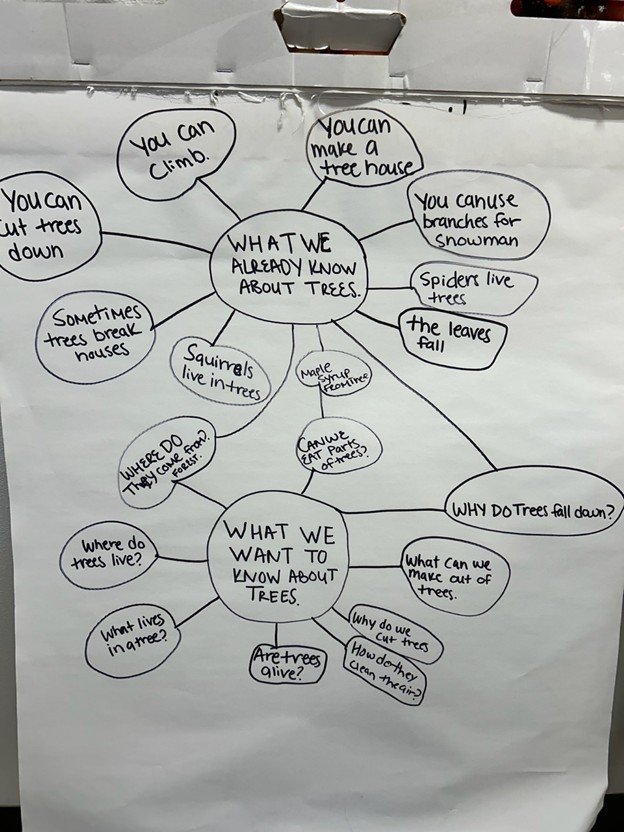
We have created a curriculum that encompasses a well-rounded approach to discovering all the characteristics trees hold. We explored the colors of leaves through making stained glass windows that the children individually decorated with vibrant colors.
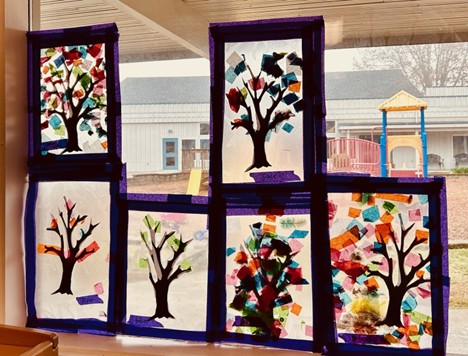
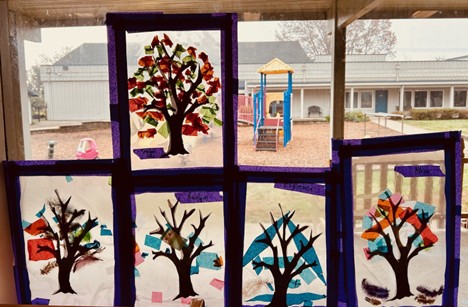
They also got to explore the various parts of trees through painting, mixing colors, and stamping the paper using Q-Tip’s to increase their fine motor skills and dexterity in their hands.
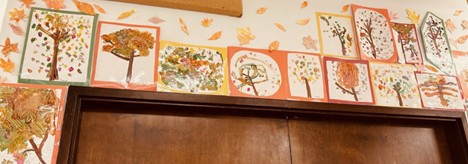
The most important people in a child’s life, and their first teachers are their immediate family or caregivers. We wanted to honor this role while incorporating the tree study into the classroom. The children were able to bring in family photos that were important to them. The children then hung them on the family tree. As we watched the leaves outside change, the leaves of the tree inside also changed through using the kid’s artwork to add color.
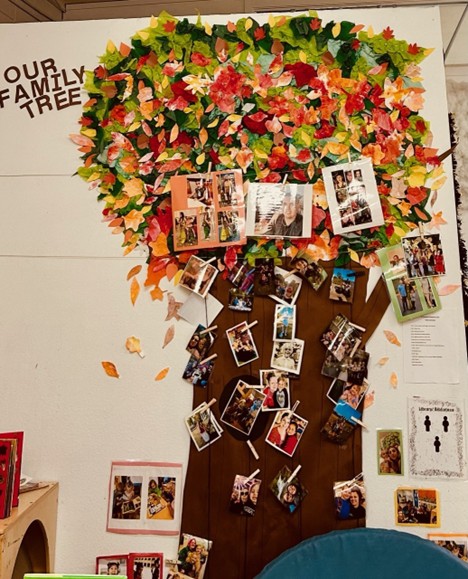
As the weather has been getting colder, we have begun to conjecture about how the trees will look in the winter, and why they will look that way. The kids are currently constructing a winter forest using the concept of negative space and mixing paint and sparkles to build upon their masterpieces.
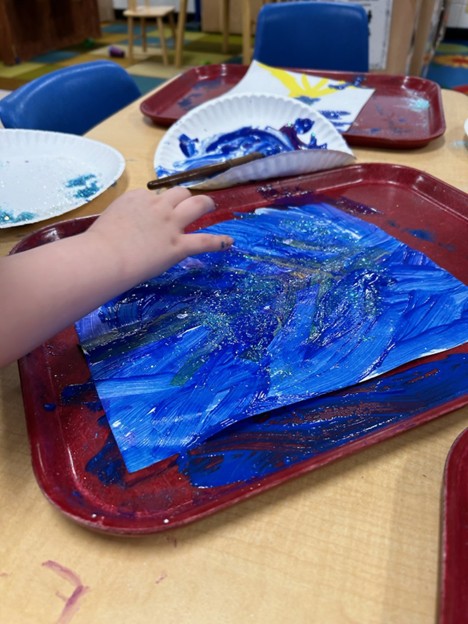
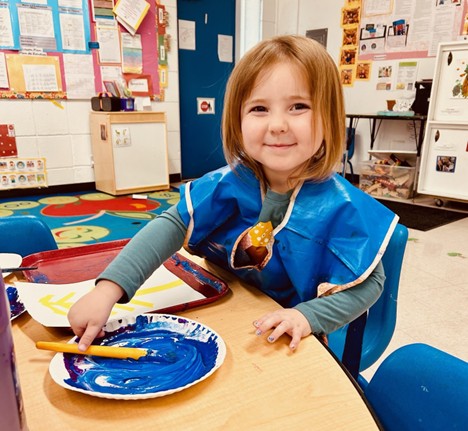
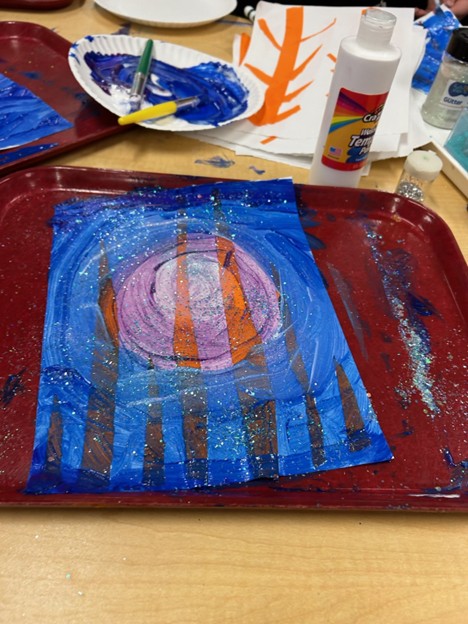
They also investigated using their scientific minds through making observational drawings of branches that had fallen off the tree.
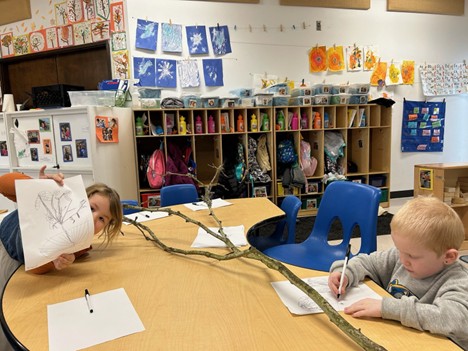
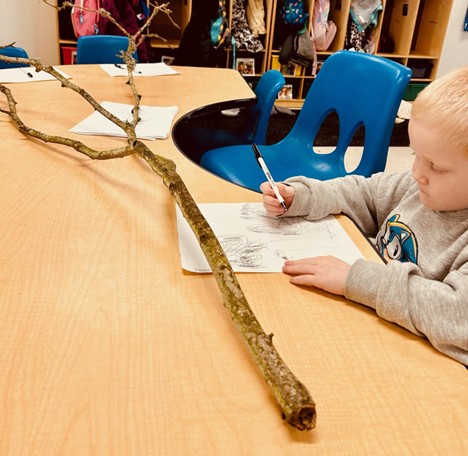
As the study continues, the children’s hearts have been melting towards trees, and they are starting to remember some of the good things they bring to our world. This does not mean that they will forget all the destruction the ice storm caused, but that they can expand their minds to understand that they as humans are resilient and capable of finding beauty, even when chaos surrounds them.
Sarah Coon
St. Thomas HS
Head Teacher
